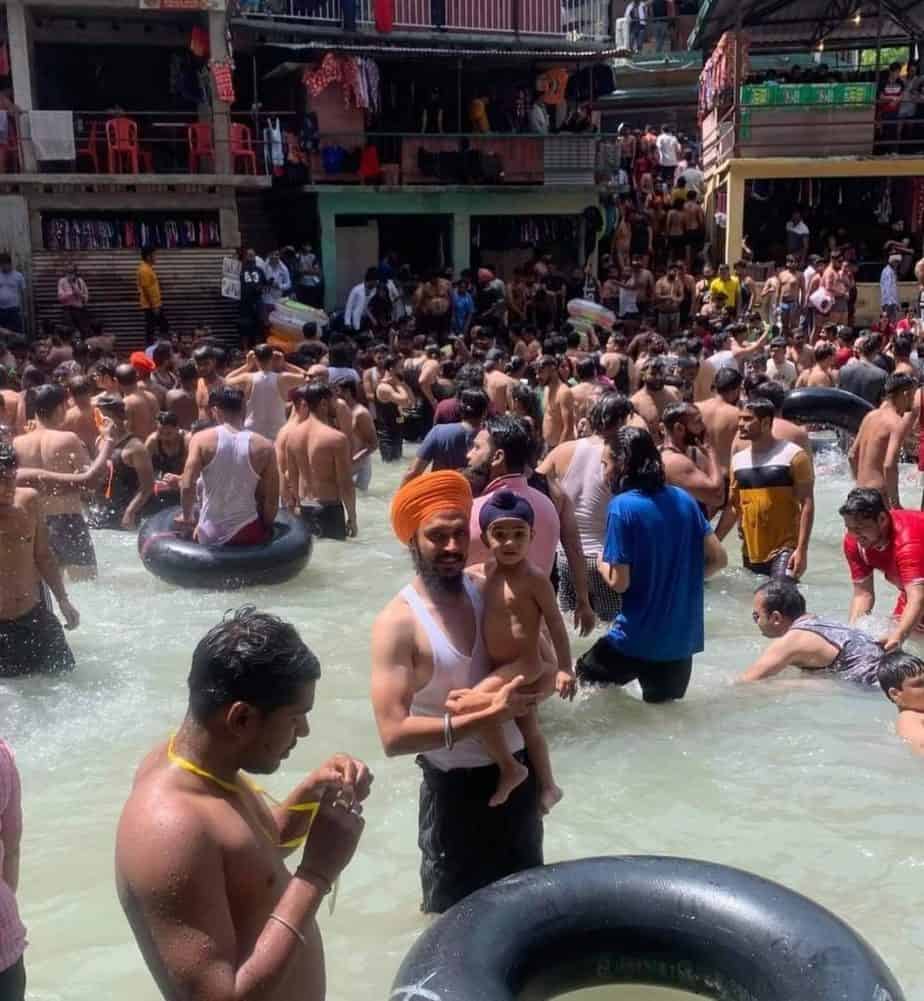Centre warns tourist cities
In the light of the expected third wave of COVID-19, health experts have raised red flags over images images of tourists, flouting all COVID Appropriate Behaviour norms, flocking to Manali and Kempty Falls in Mussoorie. Himachal and Uttarakhand relaxed curbs on movement resulting in cities like Shimla, Mussoorie, Nainital and Haridwar witnessing a surge in tourist influx from nearby states.
“Infection has always spread faster in crowded areas,” said Dr. V.K. Paul, member, Niti Aayog and the COVID-19 Task Force. “Tourism should be there, but if we are irresponsible and don’t follow COVID-appropriate behavior, the virus can spread faster”.
Source: NDTV
Read more: Trendy vacations, urban comforts: What is killing our Himalayan region
SC rejects FB’s petition challenging summons issued by Peace and Harmony Committee
The Supreme Court has dismissed the petition filed by Facebook’s Vice-President for India challenging the summons issued by the Peace and Harmony Committee of the Delhi Legislative Assembly. The committee had issued the notice in connection with posts on the Delhi Riots in February last year. However, the bench made it clear that the committee has no power to take any action in case of any wrongdoing which is prima facie established. That shall fall to law and order agencies, which are not under Delhi government’s control. The court further said the committee shall make sure that it does not overstep into the areas of law and order.
Source: Hindustan Times
Color-coded mechanism for countering third wave in Delhi
The Delhi government has designed a color-coded system for tackling the third wave. As per the system, designed by an eight-member committee, a red color display signifies maximum risk and the imposition of a full lockdown. The color system is based on points like positivity rate for two cumulative days, the cumulative number of cases (over a week) and average oxygenated bed occupancy.
Scenario for Level 1 (Yellow): When positivity rate is at 0.5% or new cases reach 1500 or oxygenated bed occupancy reaches 500.
Scenario for Level 2 (Amber): Positivity rate rises above 1% or new cases rise to 3500 or occupancy of oxygenated beds reach 700.
Scenario for Level 3 (Orange): Positivity rate crosses 2% or new cases touch 9000 or oxygenated beds occupancy reaches 1000.
Scenario for Level 4 (Red): Positivity rate crosses 5% or new cases reach 16,000 or oxygenated bed occupancy reaches 3000.
Source: The Times of India
Read more: Delhi patients search for COVID beds in smaller towns
New Health Minister announces additional budget for COVID-19 management
The recently reshuffled Union Cabinet has approved an additional allocation of Rs. 23,123 crore towards COVID-19 management keeping in mind the possibility of a third wave. This additional allocation has been made to the Emergency Response and Health Systems Preparedness Package announced earlier by Finance Minister Nirmala Sitharaman. Out of the total outlay, Rs 15,000 crore will be contributed by the Centre and Rs 8,000 crore by the states. This will allow states to create new pediatric facilities.
The new health minister Mansukh Mandavia also informed that the earlier allocation of Rs 15,000 crore had yielded positive results as the number of dedicated COVID care hospitals has gone up from 106 to 4389. Oxygen-supported beds have been increased from 50,000 to over four lakh and dedicated COVID care centers now number 10,000.
Source: Moneycontrol
Rise in the level of Nitrogen Dioxide levels in cities between April 2020 to 2021
Eight Indian cities have witnessed a rise in NO2 (Nitrogen Dioxide levels), as per Greenpeace’s report based on satellite data covering April 2020 to 2021. Amongst cities, Delhi witnessed the maximum increase during this period and Kolkata the lowest. Bengaluru, Hyderabad, Mumbai, Lucknow, Chennai and Jaipur were the other cities shortlisted in the study.
NO2 levels increased by 125% in Delhi, 94% in Chennai, 90% in Bengaluru, 69% in Hyderabad, 11% in Kolkata, 47% in Jaipur and 32% in Lucknow, said the report.
The report highlights that exposure to high levels of NO2 can result in respiratory and cardiovascular diseases.
Source: The Hindu
Also read:
- Bengaluru Buzz: Variants in 72% COVID patients | Air pollution up by 90%… and more | Citizen Matters, Bengaluru
- Mumbai Buzz- April excess death at 112% | Mumbai Airport to clear slums | Vaccine shortage returns | Citizen Matters, Mumbai
- Chennai Buzz: Conservancy workers stage protest | New greenery to come up | Campaign for beautifying walls…and more | Citizen Matters, Chennai
Compiled by Rishabh Shrivastava
